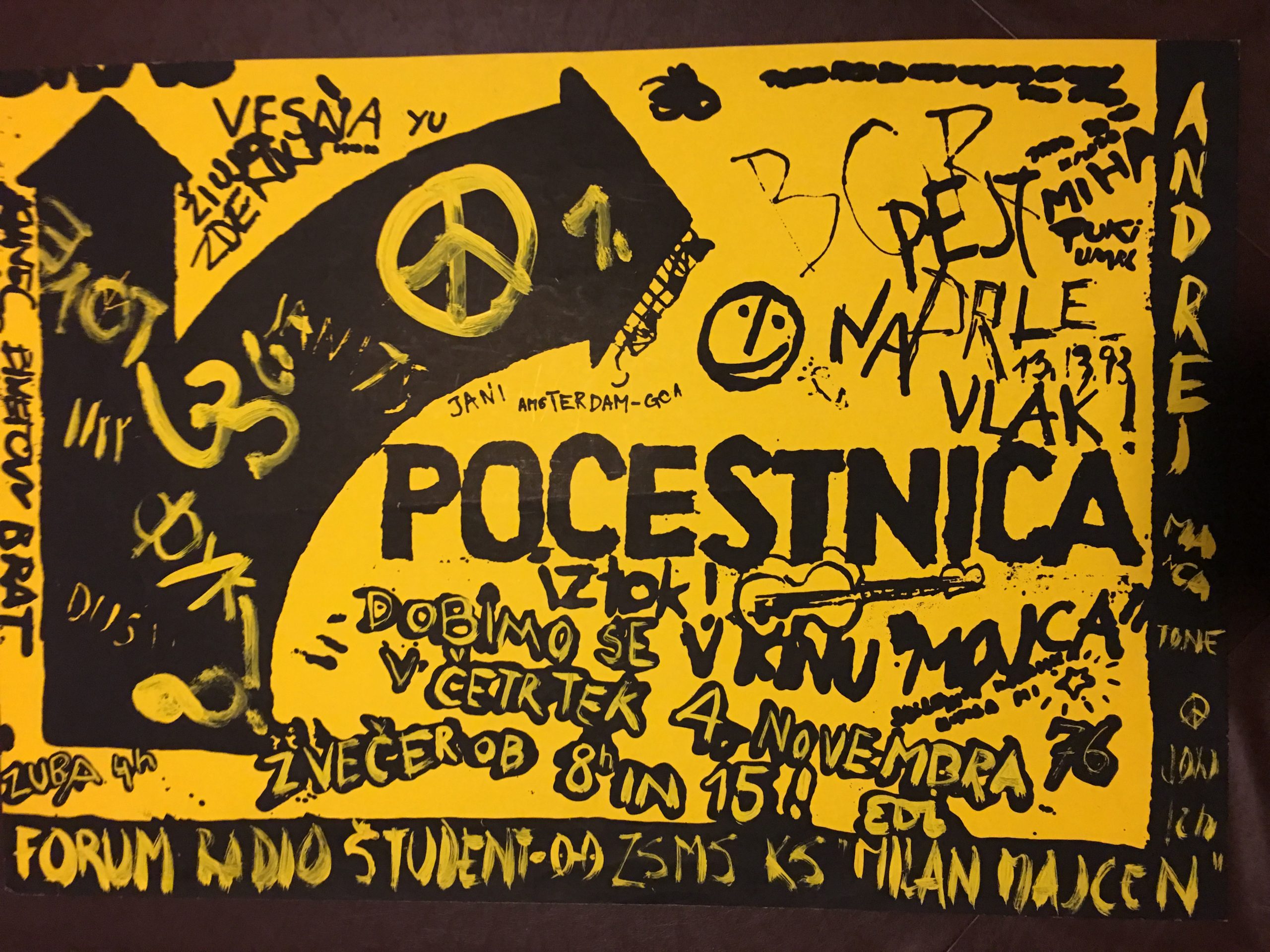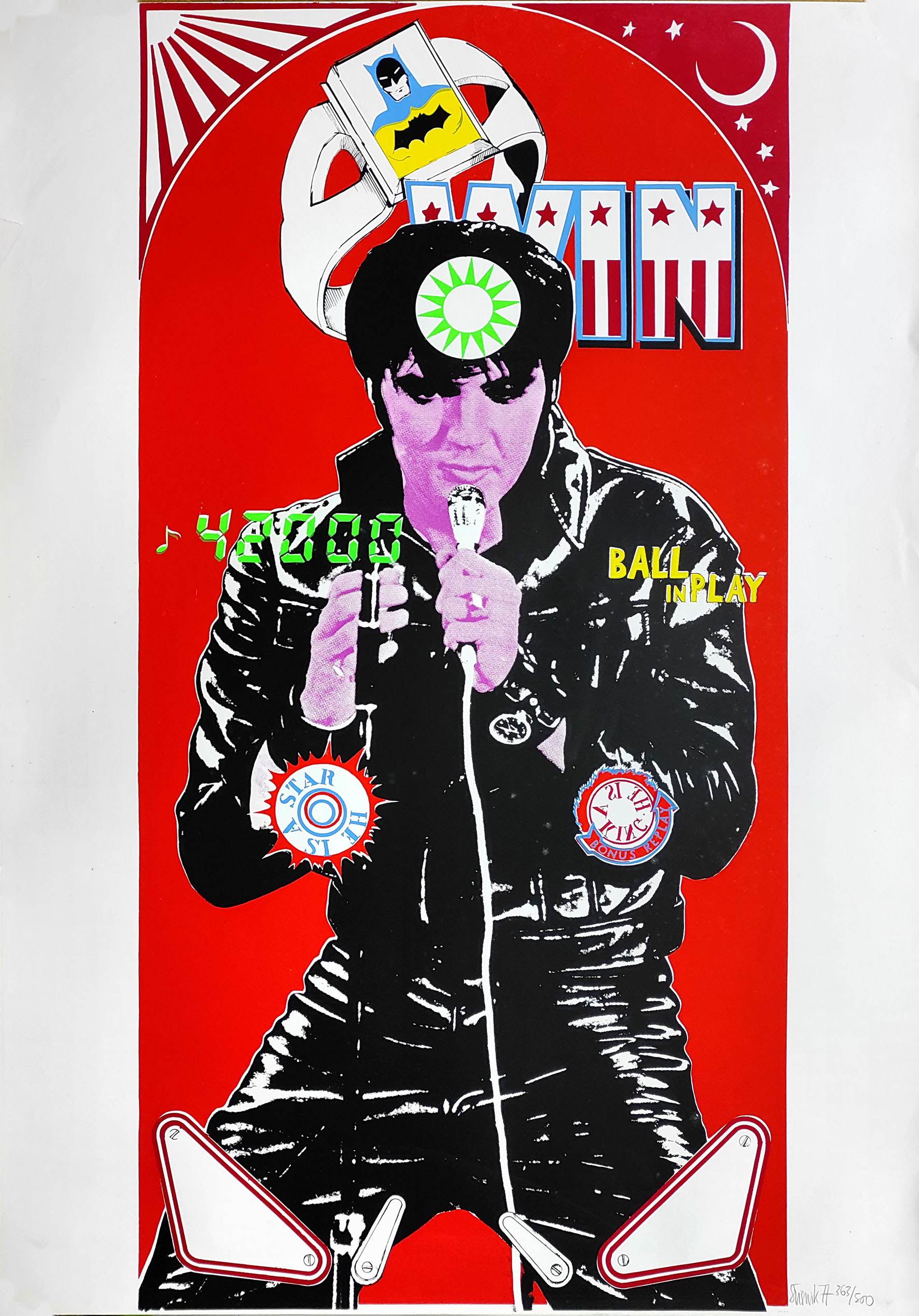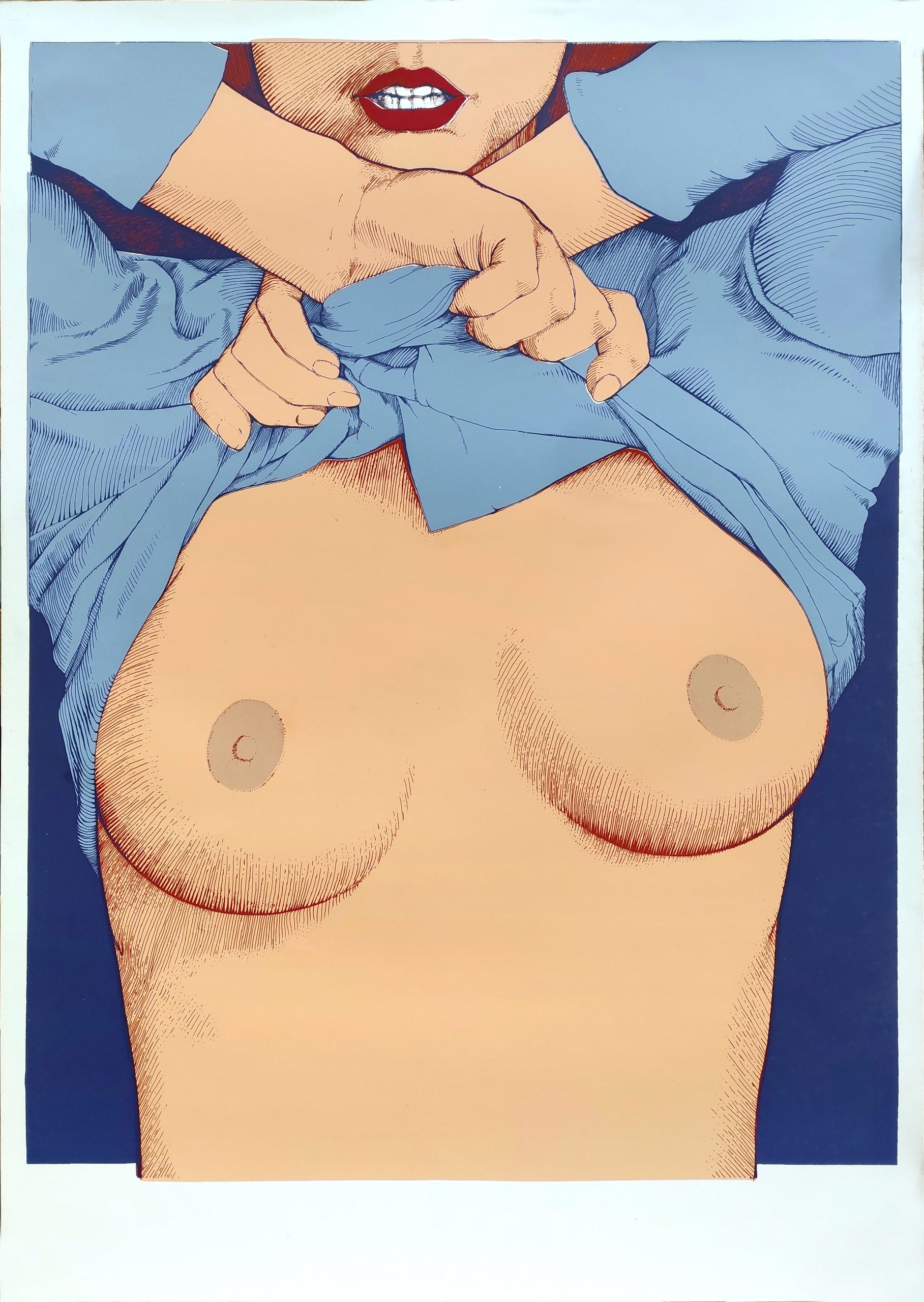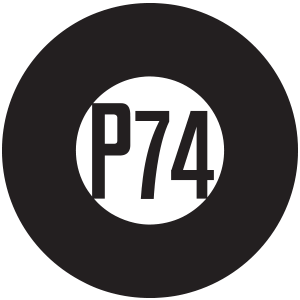
Edi Stefančič, Pocestnica, 1975

Tugo Šušnik, Elvis, 1977

Pavle Učakar, untitled, c. 1985
3 – 21 April 2023
P74 Gallery
Curator: Lilijana Stepančič
>exhibition view @P74 Gallery
______
The SOG (Sekcija za oblikovanje in grafiko / Design and Graphics Section) exhibition is one of those few that focus on the presentation of production spaces, i.e., on one of the basic components of art systems that are, despite their relevance, only a side topic of social reflection. The exhibition uncovers the forgotten story of the screen-printing workshop for young artists, which operated in Ljubljana between 1973 and 1994. As a vital, open, and flowing production space, SOG has enabled many of the most vulnerable and young generations to bring to life their mainstream, as well as countercultural, subcultural, and alternative, creative ideas. The exhibition presents a selection of graphics, posters, leaflets, and book and magazine covers which nowadays are mainly preserved by their creators and companions and which are a colourful material heritage of the economic and cultural developments in the last years of self-governing socialism.
As a unique social production space in self-governing socialism, the SOG was marked by an anarchist (not in terms of political activity) work environment and a propensity for experiments and novelties in graphics and design art. The idea was developed by a group of friends and classmates at the Ljubljana High School of Design and then carried out as part of the Forum Cultural Student Association which provided them with a workspace in the IV. block of the student campus in Rožna dolina. The initial team consisted of Simon Mlakar, Marjan Rogelj, Aleš Sedmak, Andrej Trobentar, Pavle Učakar, Rajko Vidrih, and Miha Vipotnik. Over the years, they were joined by Tomaž Kolarič, Miloš Markovič, Zdravko Papič, Dušan Pirih Hup, Jure Primožič, Albedwin Razzak, Tugo Šušnik, and Smiljan Šiška. They all worked at SOG for varying lengths of time while studying, some at the Academy of Fine Arts in Ljubljana and some at the Universita Internazionale dell’Arte in Venice, running a family business, working with photography, or simply doing other things.
The production within SOG was divided into graphic art and design. The main features of their graphic art are the breakaway from the then-dominant Ljubljana Graphic School and the development of new and diverse aesthetics which add to the established practices of avant-garde tradition, the use of photography, as well as hybridization of poster design and graphics.
SOG opened the door for countercultural, subcultural, and alternative practices and fuelled their public presence with its production – the posters. They printed, among other things, the posters for concerts and music bands of alternative rock, experimental, electronic, and postpunk genres. Posters for what are now iconic events of the Ljubljana alternative scene in the 1980s, such as the first progressive rock music festival RIO in 1980, the symposium What is the Alternative in 1984, the first Magnus festival Homosexuality and Culture of the same year, and exhibitions at the Škuc Gallery, Was is Kunst, Marinela Koželj? by Raša Todosijević in 1981 and Back to USA in 1984, are all products of SOG.
As one of its members said, SOG was the Slovenian version of the Factory. The comparison with Andy Warhol’s screen-printing studio is not mere fantasy. SOG and the Factory were spaces of creativity, unique economies, and communitarian connectivity. They surpassed the established rules of socializing and canons of creativity. They brought together high and mass cultures, the dominant and the marginal. In addition, the Factory and SOG were permeated by a productive anarchist work organization – not as a conscious working principle but as an expression of the zeitgeist among young people who were moving away from dominant cultural norms.
______
Lilijana Stepančič is one of the founders of the new European Biennial Manifesta, the City of Women Association, and the World of Arts course, a member of the National Council for Culture of the Republic of Slovenia, she’s served as the director of the Soros Centre for Contemporary Art – Ljubljana, the executive director of the Open Society Institute – Slovenia, and the director of the International Centre of Graphic Arts in Ljubljana. She’s edited numerous publications for the Museum of Modern Art in Ljubljana and the International Centre of Graphic Arts. As a curator, she’s devised and, as a director, initiated several high-profile exhibitions, such as Urbararia (1994–1995), Graffitists (2004), FV – Alternative Scene of the Eighties (2009), and Gesamtkunst Laibach. Fundamentals 1980–1990 (2010). She works as a writer on contemporary and modern fine art.

